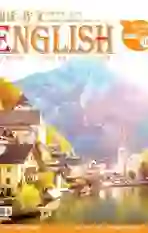肖克奎拉奥朝圣之旅
2018-12-21
在秘魯安第斯山脉的崇山峻岭中有一座神秘的古城。西班牙人在长达300年的殖民统治期间对它一无所知,秘鲁独立后的100年间也无人涉足。400多年的时光,只有翱翔的山鹰得以一睹古城的雄姿,它就是马丘比丘印加遗址。作为马丘比丘的“姐妹城”,肖克奎拉奥可谓是寂寂无名,但却有着马丘比丘无可比拟的孤独与安静。本文作者向我们介绍了在肖克奎拉奥的徒步探险经历,巨石垒筑的残垣断壁正向我们讲述着当年的故事,我们还会感受到怀古的幽思、逝去的光华,以及领略这座古城记载着的印加人无与伦比的智慧。
Halfway down the track, Nixon stops. He thwacks his machete into a stump to free his hands and reaches over a stone wall, groping for something in the vegetation beneath. A moment later he pulls up a clear plastic bag and hands it to me. It is full of human bones. “Incas.”
Since the Spanish never found this place, Nixon, the custodian, is surely right about the bones. They belong to the people who built Choquequirao, one of the most remote Inca settlements in the Andes, and were stashed here by the archaeologists who, over the past 20 years, have been slowly freeing the ruins from the cloud forest. The site that has emerged looks like a film directors fantasy of a lost city. On the day I arrive a time lapse of cloud is drifting across the ridge, above a geometry of Inca stairways and terraces cut into a steep, jungly spur above the Apurímac river, 100 miles west of Cusco in southern Peru.
Inevitably, its been called the “sister” of Machu Picchu. But while Perus poster girl is surrounded by the paparazzi crush of up to 2,500 visitors a day, Choquequirao(the Quechua name means “cradle of gold”) is almost entirely deserted.
But it wont stay that way for long. In what may be the most ambitious tourism project in the world, the regional government is investing $50m in a mile-high cable car that will glide up to Choquequirao in 15 minutes.
A week earlier, I joined a group led by Tammy Leland, of the U.S. non-profit travel company Crooked Trails, walking a dirt track past the colonial church and out into open country. Behind came a straggling caravan of mules and porters, including a couple of teenage boys who watched the college girls with sullen fascination.
Stitching these two contingents together was our guide, Juan Carlos. The trail we were on had been his weekly walk to primary school. There was no turn in the track, no stream or tree, that Juan Carlos didnt know.
We camped that night on hard ground by the river, and crossed at first light in a metal cage strung from a cable above the rapids. On the far side the ascent began: a vertical mile of switchbacks that killed the mornings chatter and left us strung out along the trail. Around midday we arrived at the hamlet of Marampata, for lunch at Juan Carloss childhood home.
I looked back across the valley. Cloud shadows were moving across the grassland and the sun was picking out fields the colour of bracken. Most of them were abandoned now, the terraces softening into the mountain, scrub reclaiming ground from people who had gone to the cities long ago.
Two more hours hiking brought us to the terraces below Choquequirao, where we pitched our tents in the fading light. The Milky Way appeared, sharpening until you could see the patterns of darkness that the Inca imagination had stretched into constellations. The llama. The snake. The condor.
We reached the ruins on a track kept open more by machete than footfall. All around were walls and terraces grown over with jungle.
Like its famous sister, Choquequirao seems to have been a kind of royal estate for Inca nobility, built a generation or two before the Spanish arrived. Seeing the sophistication of these ruins—the trapezoid doorway that opened on to the plaza, the gabled kallanka(great hall) halls for ceremony and meeting, the stairways and irrigation channels—I was struck by the question that has long haunted Peruvian history: how did a band of thugs and chancers from the illiterate plains of Estremadura, stranded thousands of miles beyond their supply lines and lost in a mountain terrain unlike anything theyd ever seen, bring down an empire of such reach and confidence?
Towards midday I wandered off alone, letting the conviviality of the group recede into silence. Below me, clouds were drifting through the immense vertical spaces of the Andes. The river was a distant curl of light. The name Apurímac means “the God who speaks” in Quechua, and in the quiet I could hear its voice, millions of years old and patient beyond measure.
When I looked up, the group had gone and it was Nixon, the custodian, who showed me the path. He knows these ruins as well as anyone, so I asked him about the changes that were coming across the valley. After a while he said hed seen a condor that morning, circling over the terraces. “For us, the condor is a spirit of the heavens. If they build the cable car, it will not come.”
It was almost dark when we got back to the river. Three or four of us left our clothes on the rocks and followed Juan Carlos into the water, letting it wash away the sweat and dust of the trek. By the time Id dressed and scrambled up to the cable to take us back across the river, it was pitch black. One of the mule boys had waited to push the cage out over the water, but there was no one to pull from the other side so it ground to a halt, swaying above the glint and roar of the river. I didnt know what the cable car would bring to Choquequirao, or to the people who lived in this valley. But as I took in the slack from the rope and felt the cage move, I was glad to be crossing the Apurímac like this, hand over hand in the darkness.
尼克森走着走着在半道上停了下来。他把手里的砍刀甩插在一个树桩上,空出手来,伸过石墙,摸索着植被下的东西。过了片刻,他抽出一个透明的塑料袋,并将其递给我。塑料袋里都是骸骨。“印加人的。”
因为西班牙人未曾发现这个地方,这儿的监管人尼克森对这些骸骨的说法,无疑是正确的。它们属于建造了肖克奎拉奥的人们,肖克奎拉奥是安第斯山脉最偏远的印加人定居点之一,它曾被考古学家所藏匿,在过去的20年间,这片遗迹才渐渐地被考古学家从云雾森林中挖掘出来,展现给世人。这座重见天日的古城就像是电影导演幻想中的“失落之城”。我到达这里的那天,只见随时间推移的云朵漂浮在山脊上,山脊下是呈几何图形的印加阶梯和梯田,峙立在阿普里马克河上的一个陡峭、丛林满布的山坡上。阿普里马克河位于秘鲁南部的库斯科以西100英里。
肖克奎拉奥难免会被称为马丘比丘古城的“姐妹城”。但是尽管马丘比丘每天被多达2500名看似狗仔队的游客所包围,肖克奎拉奥(在盖丘亚族语中的意思是“黄金的摇篮”)却几乎可以说是空无一人。
但是这样的景况不会持久。这可能是世界上最雄心勃勃的旅游项目,当地政府准备投资五千万美元建造可以在15分钟内滑行至肖克奎拉奥城的高空电缆车。
一个星期前,我参加了由塔米·利兰德领导的一个小组,来自美国非牟利旅游公司“曲径通幽”。小组活动是沿着泥土小道走过殖民教堂,走进开阔的旷野;我们后面来了一个掉队的大篷车车队,队里有几匹骡子和几个搬运工,包括几个十几岁的男孩,痴痴地看着路上的女大学生们。
把我们这两批人集聚起来的是我们的向导胡安·卡洛斯。此刻我们正在走的这条小道曾是他上小学时每周一次的必经之路。这里的每一个转弯岔道,每一条河流或是每一棵树木,胡安·卡洛斯都了如指掌。
那天晚上我们在河边坚硬的地面上露营,然后在破晓时分乘坐激流之上的凌空悬在缆线上的金属小笼子穿过河流。缆线的另一端开始上升:垂直的之字形上升中断了清晨的闲聊,大家一路上都心有余悸。晌午时分,我们到达玛拉姆帕塔村庄,在胡安·卡洛斯的老家用了午餐。
我回望整个山谷。云层的影子在草原上掠过,阳光给田野挑染出一片青绿色。这些田野大多数都被荒废了,梯田逐渐变形,与山融为一体,矮灌木丛崛地而起,仿佛在向许久前就搬进城里的人们收复失地。
经过两个多小时的徒步行走,我们来到了肖克奎拉奥下方的梯田,我们在昏暗的光线下搭帐篷。这时,银河出现了,愈来愈亮,直到你可以看到夜空中的图案,那些由印加人的想象力创造而成的星座:骆驼、蛇和秃鹫。
我们沿路用砍刀开辟出一条道路,才终于走到了遗迹废墟。周边都是墙壁和梯田,丛林密布。
正如其著名的姐妹城一般,肖克奎拉奥似乎曾是印加贵族的皇家庄园,为西班牙人到来之前的一两代人所建立。目睹这些结构复杂的遗址——广场入口的梯形门道,作仪式和会议用的人字形大厅,那些楼梯和灌溉渠道——我此时也被这个秘鲁历史上的千古之谜所困扰:一群来自埃斯特雷马杜拉这个文盲平原的暴徒和投机者,远陷于运输路线外的山岭地带中,是如何推倒这样一个疆域辽闊、自信无比的帝国的?
晌午将至时,我独自漫步,离人群喧嚣越来越远。脚下,云雾正飘浮在安第斯山脉巨大的垂直空间中。河流是远处一道曲旋着的光。阿普里马克河在盖丘亚族语里的意思是“说话的上帝”,静谧中我仿佛可以听见他的声音,穿越几千年的历史,带着无可估量的耐心。
等我抬起头来,人群都散了,只有监管人尼克森还在给我带路。他和这里的每个人一样,极其熟悉这些遗址,所以我问他在不久的未来这座山谷会有什么变化。他沉默了一会儿,然后说那天早上他看见了秃鹫,盘旋在阶地上。“对我们来说,秃鹫就象征着上帝的精神。如果他们建造起电缆车,秃鹫们就不会再来了。”
我们回到河边的时候,天已经黑了。我们三四个人把衣服脱了放在岩石上,跟随胡安·卡洛斯走进河里,让水冲洗掉长途跋涉所出的汗和沾染的灰尘。等我穿好衣服,爬到带我们返回河对岸的缆车时,周围已是漆黑一片。其中一个赶骡的男孩在岸边等着将笼子推出去,但是另一边没有人拉动,所以笼子慢慢地停了下来,在闪烁和咆哮的河上摇晃着。我不知道电缆车会给肖克奎拉奥城,或者是生活在这个山谷里的人们带来什么变化。但是,当我拉紧松弛的绳子,感觉到笼子在滑动时,我很高兴自己是以这种方式渡过阿普里马克河的,在黑暗中用左右手轮流交替地拉拽着绳子,使缆车滑动前行。
